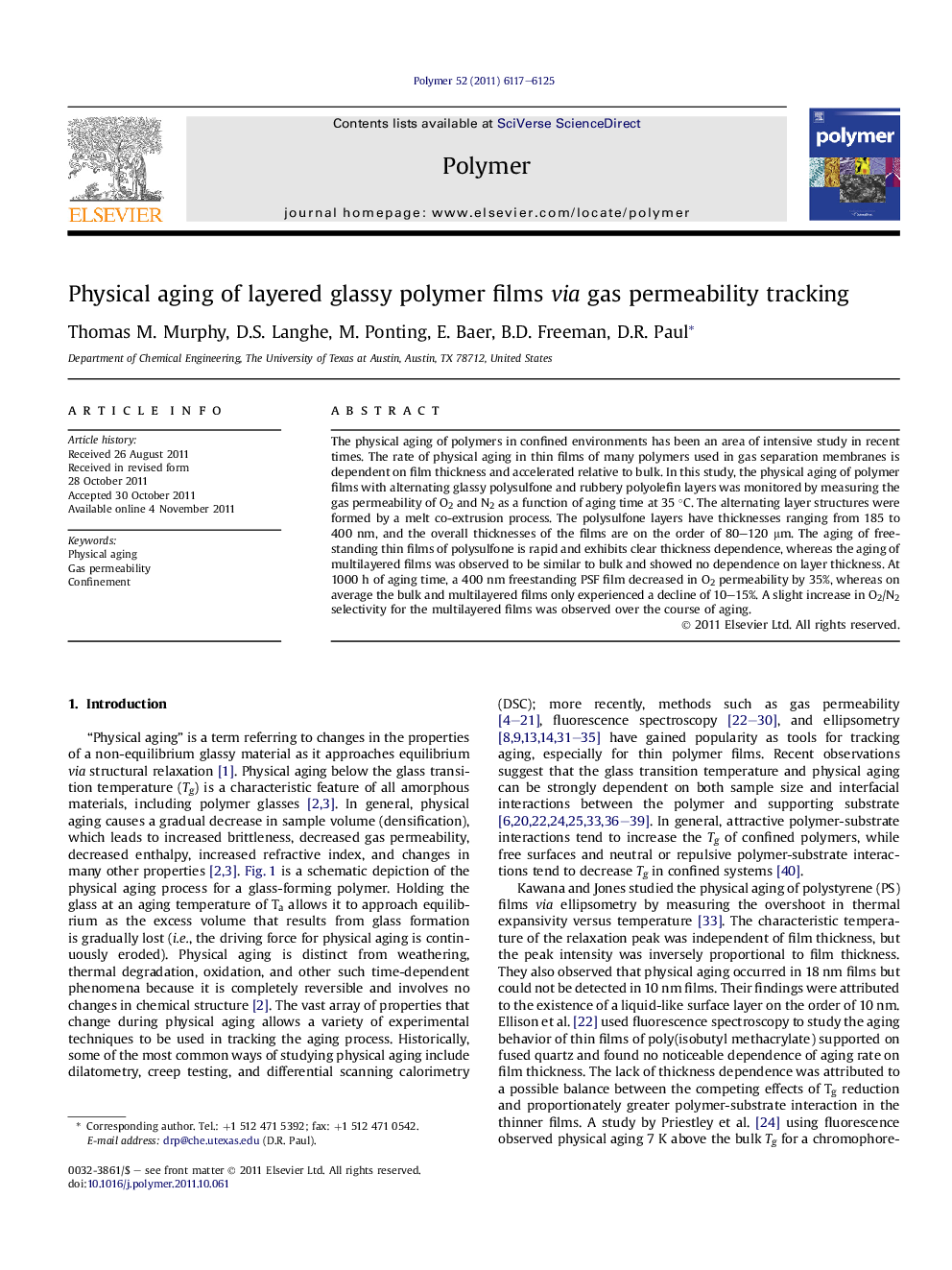| Article ID | Journal | Published Year | Pages | File Type |
|---|---|---|---|---|
| 5184060 | Polymer | 2011 | 9 Pages |
The physical aging of polymers in confined environments has been an area of intensive study in recent times. The rate of physical aging in thin films of many polymers used in gas separation membranes is dependent on film thickness and accelerated relative to bulk. In this study, the physical aging of polymer films with alternating glassy polysulfone and rubbery polyolefin layers was monitored by measuring the gas permeability of O2 and N2 as a function of aging time at 35 °C. The alternating layer structures were formed by a melt co-extrusion process. The polysulfone layers have thicknesses ranging from 185 to 400 nm, and the overall thicknesses of the films are on the order of 80-120 μm. The aging of freestanding thin films of polysulfone is rapid and exhibits clear thickness dependence, whereas the aging of multilayered films was observed to be similar to bulk and showed no dependence on layer thickness. At 1000 h of aging time, a 400 nm freestanding PSF film decreased in O2 permeability by 35%, whereas on average the bulk and multilayered films only experienced a decline of 10-15%. A slight increase in O2/N2 selectivity for the multilayered films was observed over the course of aging.
Graphical abstractDownload full-size image
